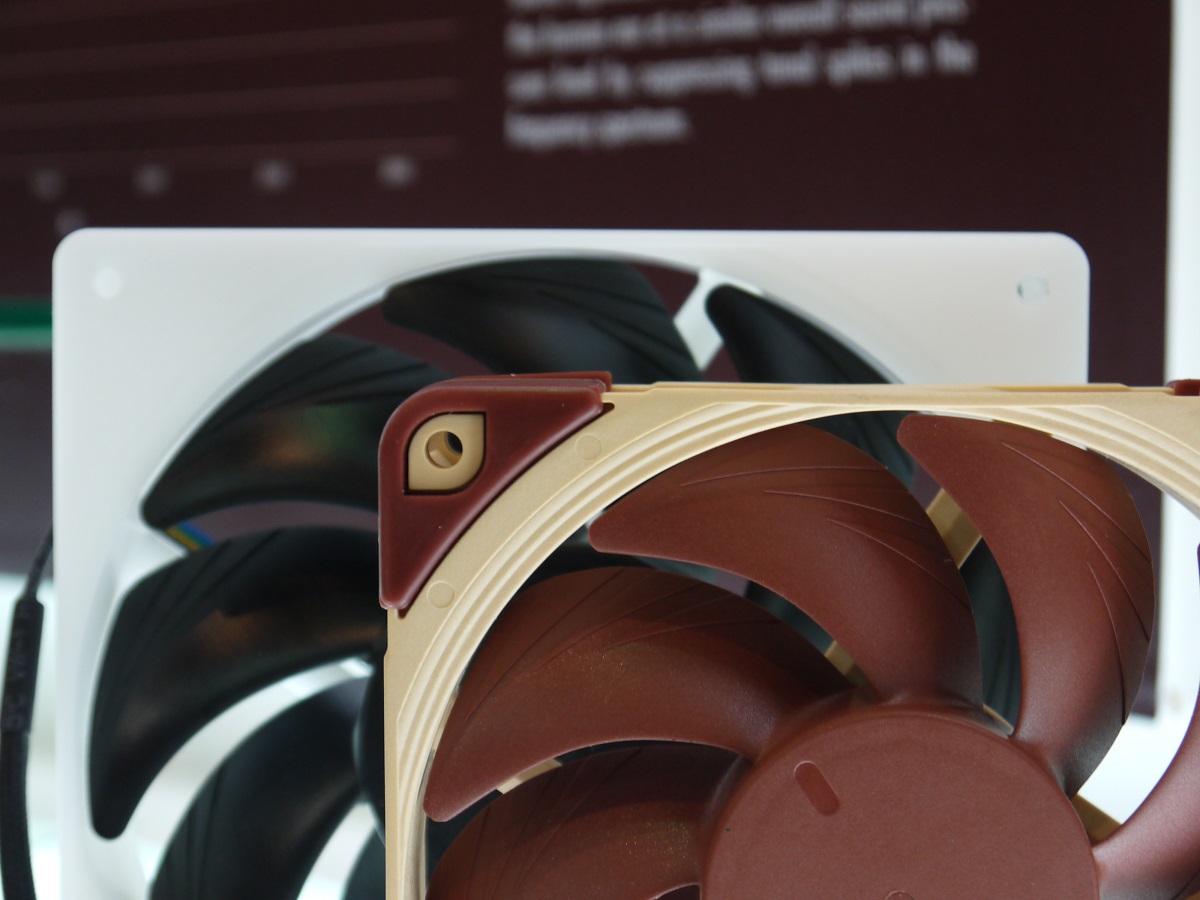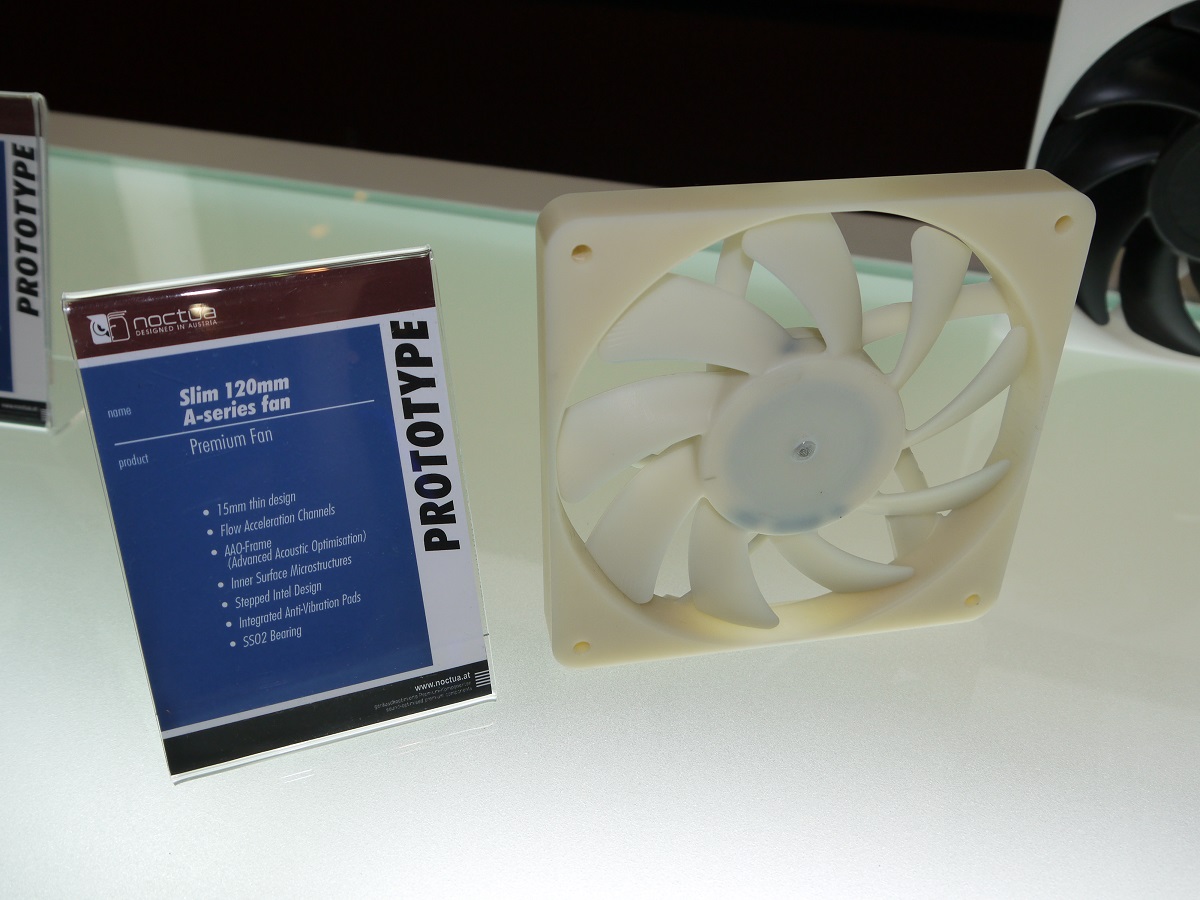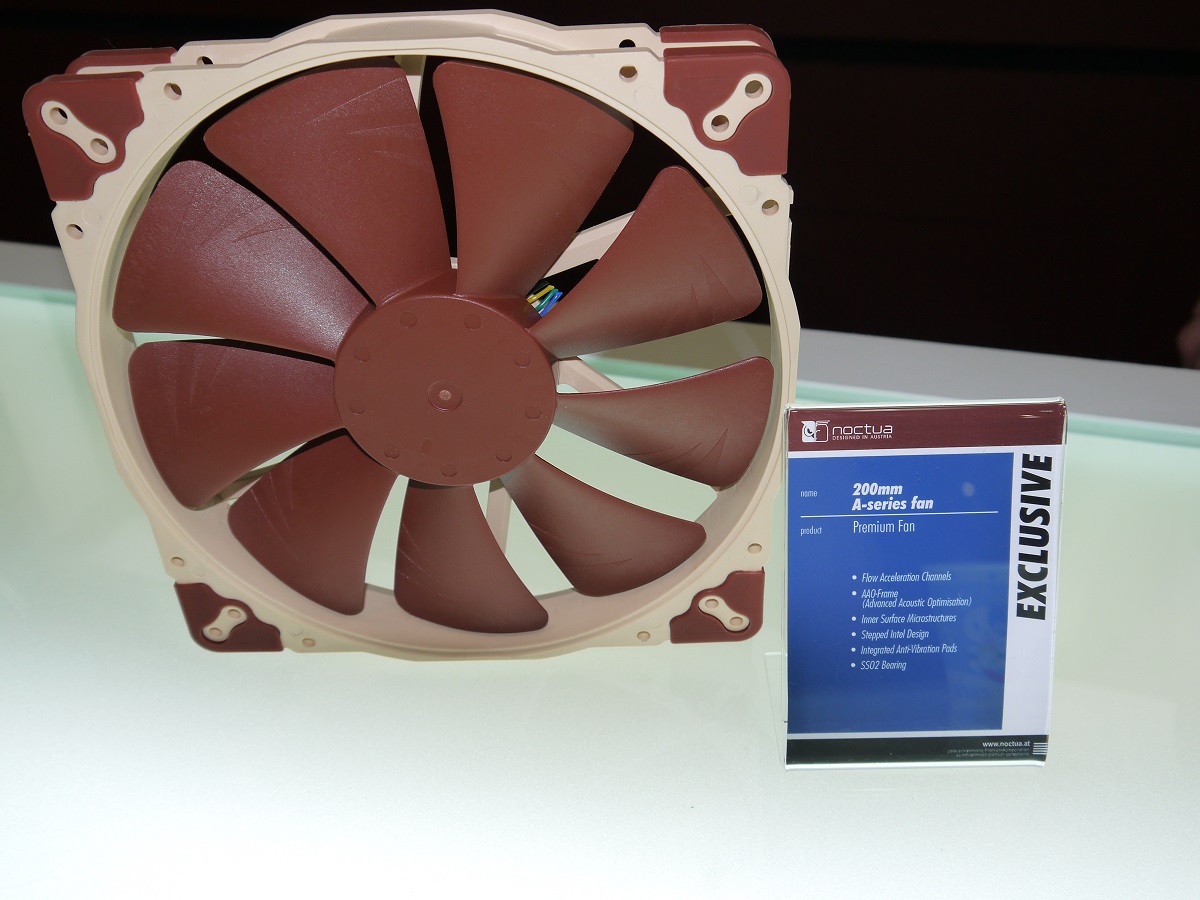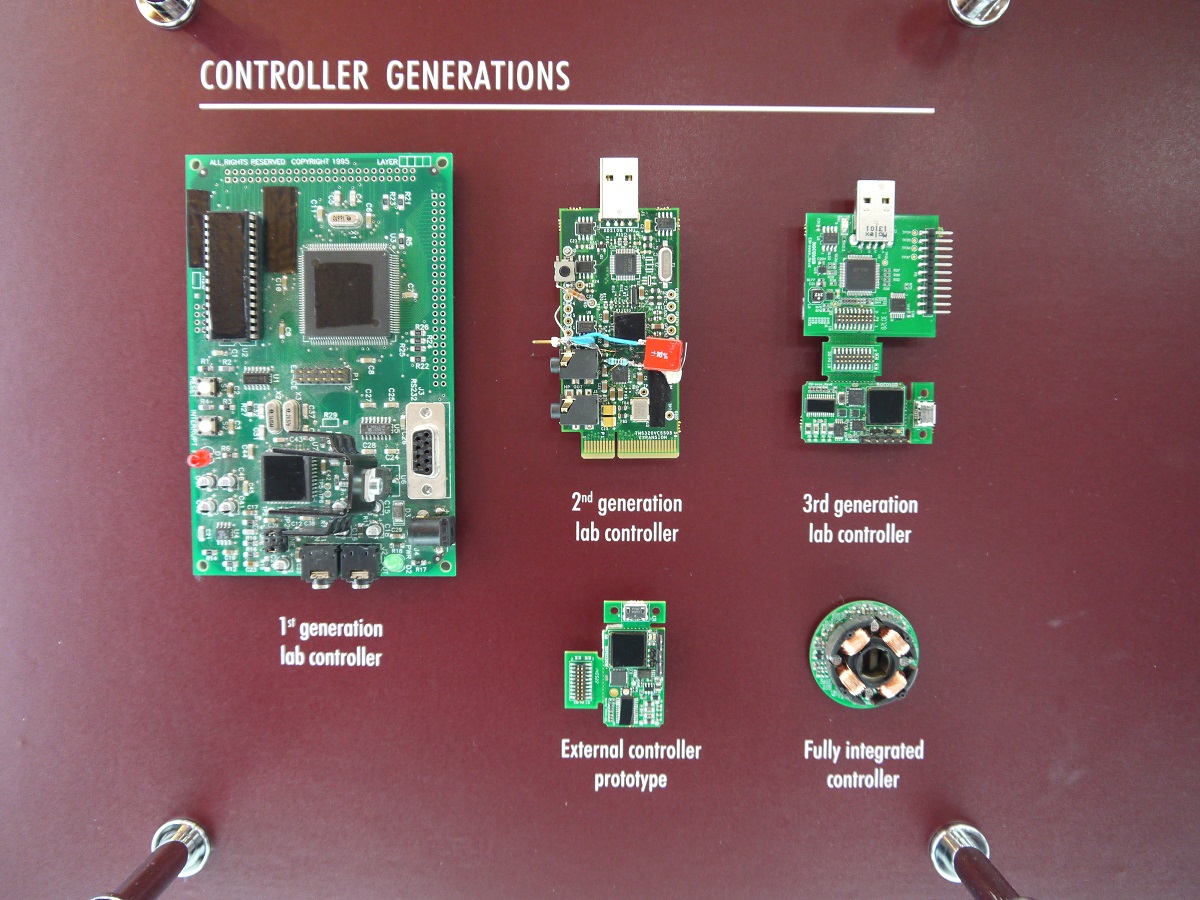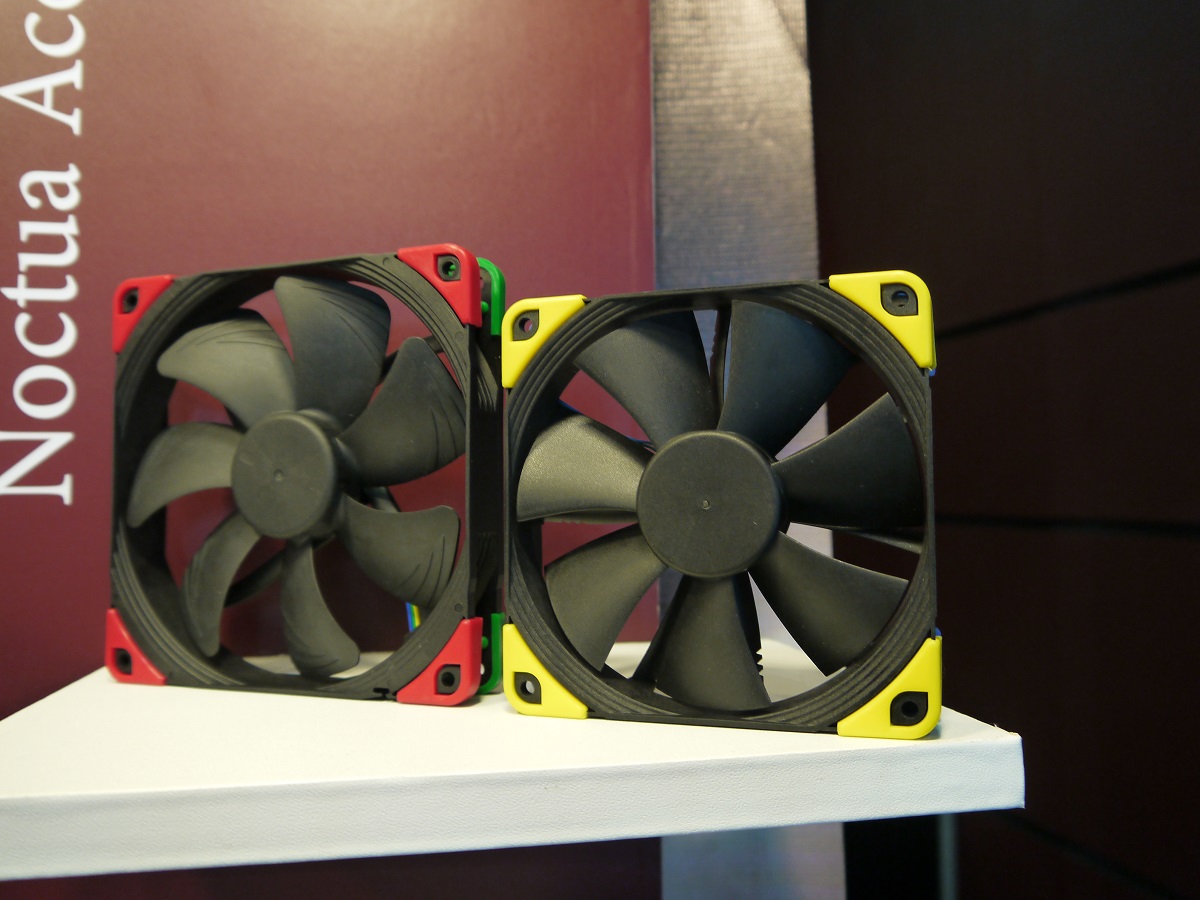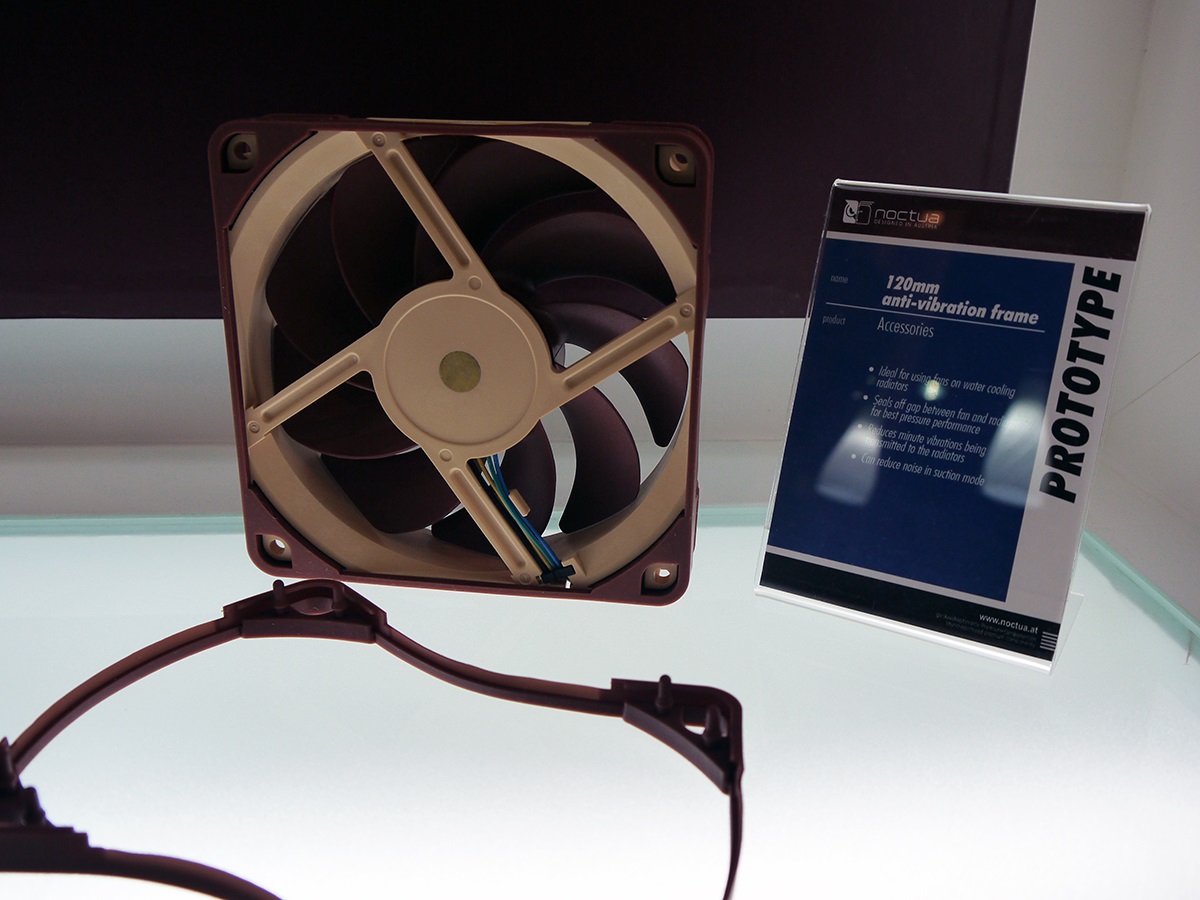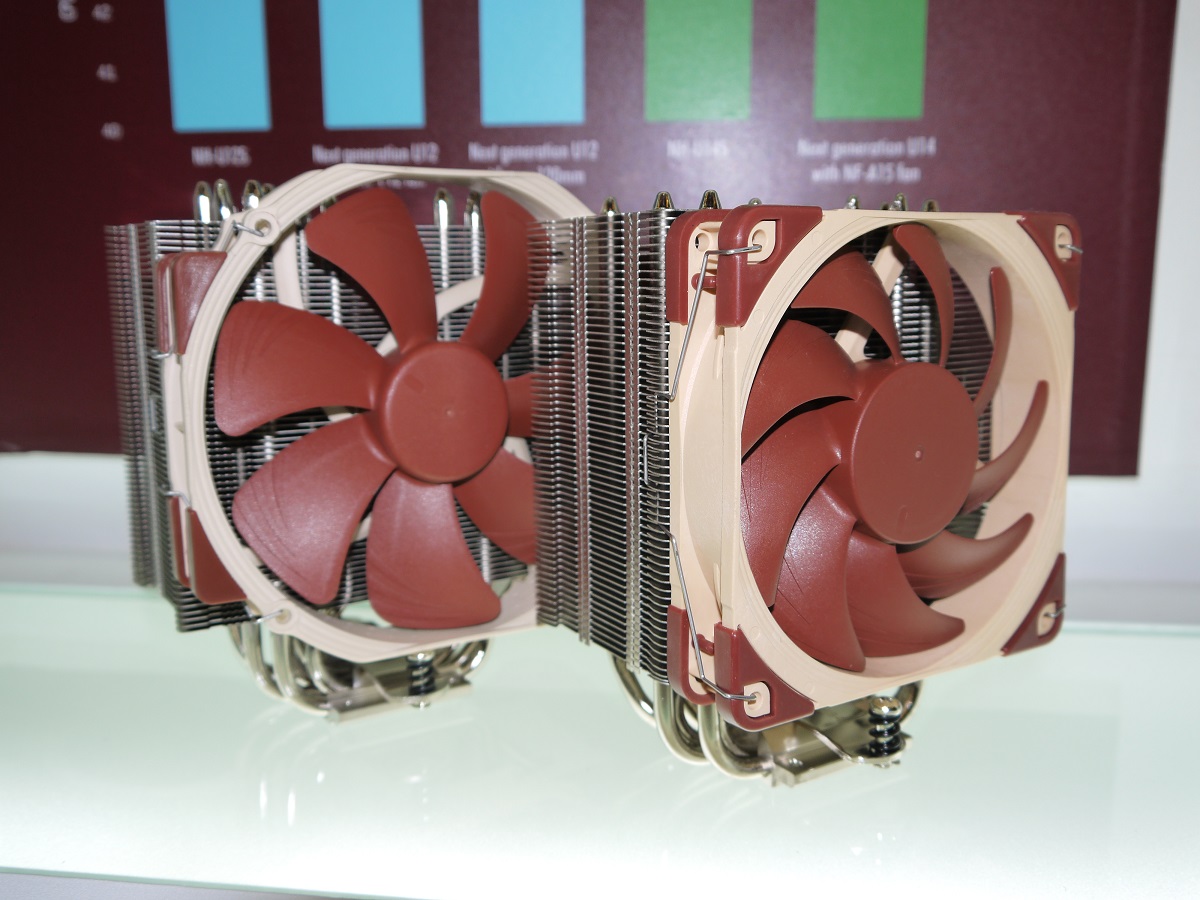Noctua Slowly Advances At Computex 2015
That Noctua is taking its sweet time to develop its products is no surprise, and therefore there are also no huge surprises at its Computex booth. Even so, that didn't stop the Austrian cooling manufacturer from impressing us.
Noctua is arguably the slowest company to bring new products to market, but fortunately, it has pride in being so careful. The reason for being so sluggish is that the company spends endless amounts of time developing its products in order to ensure that they are as perfect as possible when they get released.
Good enough, for Noctua, simply isn't good enough. To that end, this year, Noctua's booth at Computex didn't seem very different from what it was last year. Heck, one of the prototype fans was still in its prototype phase.
The highlight of the booth was the new 120 mm fan, which hasn't been named yet. According to Noctua, it is placed between the NF-F12 and the NF-S12A fans, but rather than being a middle man, it strikes a balance between the two that actually makes it more ideal for most applications because it offers higher static pressure and more airflow when mounted on radiators and heatsinks. The biggest contributing factor here is the ultra-tight 0.5 mm tip clearance, which requires tougher fan blades and tighter manufacturing tolerances to work.
Noctua was also working on a 140 mm variant of the fan, which is still in its prototype phase. You can see it pictured (above) behind the 120 mm variant.
The prototype we saw last year, and this year again, is a 15 mm thick 120 mm fan. The reason why it is still in its prototype phase is simple: because it is so thin, building the motor is very difficult. The use of a narrower bearing means that the blades are more likely to wobble, causing more noise and unstable operation, which increases vibration.
The 200 mm fan was also on display, and it's also still in the development phase. Last year it looked almost finished, but Noctua had to go back to the drawing board with its design because of its weight. If you were to have the fan mounted vertically, it would run without issue, but with the fan mounted horizontally and pulling air up, it would put too much strain on the bearing, reducing its lifetime.
The stopper that kept the impeller attached to the frame would also hit its edge, which would create a minute but apparent grumbling noise. With plenty of cases having room for top-mounted 200 mm fans, Noctua couldn't see itself bringing the fan to market.
Get Tom's Hardware's best news and in-depth reviews, straight to your inbox.
With its Active Noise Cancellation (ANC) project, Noctua has made some progress. Over the last year, it managed to get the controller for the algorithm small enough to be fully integrated, fitting it under the fan motor. (Un)fortunately, the new 120 mm fan with the tight tip clearance has brought noise levels down to the same level as made by the original fan that Noctua started making the ANC system with, so in order to still have any gains from the ANC technology, Noctua is now in the process of adjusting it to work with its newer fans.
Noctua said that its black industrial PPC fans are especially popular among U.S. consumers (instead of its intended industrial audience). Because of its popularity among consumers, Noctua kicked off project Chromax, which is basically colored anti-vibration pads, bringing a little extra color to the colorless fans. They also work on the other 120 mm and 140 mm fan models.
If you're using the 120 mm fans on a radiator, it is useful to be able to seal its frame nicely to the radiator to prevent air leakage, and especially with the new 120 mm fan offering the ultra-tight tip clearance, it would be a waste to let any air seep out unnecessarily. To solve that problem, Noctua is making rubber gaskets that fit around the frame of its A-Series fans.
Lastly, Noctua completed its refresh of its assortment of CPU coolers. Over the past few months the company updated its dual-tower coolers and Type-C coolers, and now it has finally wrapped up the development of its new single-tower coolers. Neither have been named yet, but the next generation of 120 mm and 140 mm single-tower coolers offer a wider asymmetrical design. The wider design means that RAM clearance issues will be greater when using an additional fan, but a Noctua rep mentioned that few people actually use a second fan on these coolers, so it doesn't really matter all that much.
The products that are closer to being finished, or simpler, should be coming out sooner, but more difficult-to-make products such as the ANC system and the slim 120 mm fan may take a little longer.
Of course, things may always take longer with Noctua, and we're totally fine with that. Noctua's goal is to never rush things to the market as quick as possible; instead, it will let you buy its products when it knows they are ready to take on the scrutiny of the public.
Follow Niels Broekhuijsen @NBroekhuijsen. Follow us @tomshardware, on Facebook and on Google+.
Niels Broekhuijsen is a Contributing Writer for Tom's Hardware US. He reviews cases, water cooling and pc builds.
-
alidan i wish they would to one stupidly high power fan, not giving a damn about noise but still trying to be quiet... would love to see a 100+ or even 200+ cfm fan from them so i know what the competition should be at noise wise.Reply -
skipperkins Replyi wish they would to one stupidly high power fan, not giving a damn about noise but still trying to be quiet... would love to see a 100+ or even 200+ cfm fan from them so i know what the competition should be at noise wise.
One of their industrial fans is pretty crazy (NF-A14-3000). It is still quiet. For the most part the market for this type of fan is filled by Delta, Sunon and Sanyo. They make those in 120mm, 80mm and 40mm for servers that need airflow because none of the heat sinks have fans (not even CPUs).
They are kind of useless, save for a few that are actually quiet on a controller. Delta and Sunon have 150 CFM 120mm fans that are silent with a fan controller. They also last forever. A good double ball bearing Sunon will still be running after humanity died and cockroaches rule the earth.
-
James Mason Noctua, I wanna like your fans, but the fact their color clashes and doesn't go with any other computer part is infuriating. Because it's not "just black" so we can't ignore it. It stands out like a sore thumb.Reply -
Shankovich Don't think most PC fan companies use aerodynamicists to design their fans. Plus some of their 3D CFD figures on their site is 100% Ansys. Aside from that surprise from Zotac on their GPU fan (essentially flaps), don't see most companies try this hard.Reply -
alextheblue ReplyA good double ball bearing Sunon will still be running after humanity died and cockroaches rule the earth.
That's what RobCo Industries uses! I... I just watched the Fallout 4 trailer.
Anyway I've had really good luck with Noctua fans, dead silent but with enough airflow for my needs, really good PWM designs that don't have any "bad spots" at any RPM from minimum to max, and reliable. I don't mind the color scheme, but then again I didn't color match my RAM to my mainboard or GPU either, gasp. -
JackNaylorPE I don't understand the focus on high SP..... what's out there to put them on ?..... I mena today not 10 years ago. Just how many 30 fpi radiators are left out there ? With the 8 - 12 fpi rads dominating the market, what market niche are they targeting ? More pressure = more velocity = more noise. The fan need only provide the required static pressure necessary to overcome the resistance of the fin spacing. A 1,000 pound hoist doesn't lift a 200 pound weight any better than a 25 pound hoist does.Reply
Noc does do a great job, unlike Corsair, with their PWM fans but with NZXT joining Phanteks with a PWM => DCV fan hub, you can get all the benefits of PWM w/o any of the negatives (cost and low speed hum / clicking). Yes, Noc avoids the clicking / hum at low speeds but to do that and get a quality / quiet fan, you need to spent twice as much ($30). I paid $10 each for my fans, they outperform the Noc by 3C while spinning 300rpm slower. With 10 rad fans and 5 case fans, that saved me $300 (15 x $20).
What I would like to see are fans with removable blades (i.e Enermax Magma). The same blade housing design could be offered in:
Standard and medium pressure designs
DCV and PWM designs
Black Housing w/ white blades
Optional Accessory Rit Dye kits for custom / theme builds -
Montego When I was building my desktop PC I was trying to color-match or color-compliment all my components. When it came to the color of the Noctua fans, they simply didn't work at all.Reply
A fellow builder, whom I have great respect for, told me that in his opinion Noctua arguably makes the best fans on the planet. The distinct coloring of Noctua fans lets everyone know that my computer build is now outfitted with, perhaps, the best retail fans available, which BTW, has spurred much envy amongst my gaming friends. -
JackNaylorPE 2nd best .... :)Reply
Lose by 3C here even with a 300 rpm advantage
http://www.overclockersclub.com/reviews/phenteks_f140/3.ht
2nd, 3rd and 5th place here too
http://www.silentpcreview.com/article1345-page7.html
